MercoPress. South Atlantic News Agency
Tag: floods
-
Wednesday, June 30th 2021 - 09:13 UTC
Floods and droughts mean yearly losses worth US $ 1 billion for Argentina, says World Bank
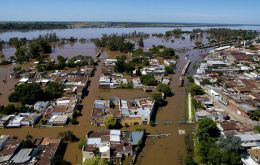
A new report titled “Impact of Climate Crisis on Poverty and the Argentine macroeconomy” points out the serious consequences of the impact of climate change on the Argentine economy, mainly due to losses caused by floods and droughts, the World Bank announced Tuesday.
-
Monday, January 27th 2020 - 07:33 UTC
Catastrophic rainstorms and floods in central Brazil: at least 50 deaths
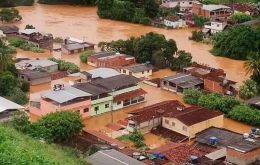
At least 50 people have died in Brazil and more than 25,000 have been displaced due to widespread flooding following storms and heavy rains that have swept across the southeast of the country, authorities said on Sunday.
-
Thursday, April 11th 2019 - 09:15 UTC
Caimans on the loose in flash flooded Rio's favelas

Residents of a hillside Rio de Janeiro favela risk finding hungry caimans at their front door after the city was hit hard by heavy flooding caused by torrential rain.
-
Wednesday, April 10th 2019 - 08:47 UTC
Torrential rain kills ten in Rio and leaves the city in a state of emergency
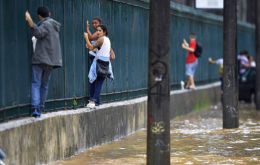
Torrential rain left at least 10 people dead in Rio de Janeiro, officials said on Tuesday, as emergency workers rescued people trapped by the downpour and clean-up efforts gathered pace.
-
Saturday, April 6th 2019 - 09:58 UTC
Heavy rains with flash floods in northeast Brazil and in Paraguay

Civil defense officials have reported that heavy rains in northeastern Brazil have killed at least three people and displaced 3,600, while apparently unrelated flooding far to the south in Paraguay has forced some 20,000 people from their homes.
-
Tuesday, March 12th 2019 - 09:25 UTC
Intense rains and flash floods killed at least 11 people in Sao Paulo
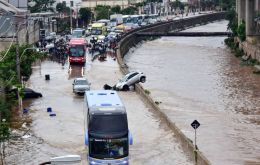
Intense floods in Latin America's business hub Sao Paulo, which turned roads into rivers and tossed cars atop buildings and into trees, have killed at least 11 people, with authorities bracing for more rain.
-
Saturday, January 19th 2019 - 09:22 UTC
Extreme wet January displaces thousands and floods farmland in Mercosur member countries
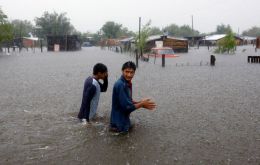
Intense rainfall in northeast Argentina and neighbouring areas in Mercosur members has caused devastating floods, amplifying the economic burdens of Argentina's recession. Over 5,000 people have evacuated the region, and millions of hectares of crops have been sent underwater.
-
Wednesday, June 11th 2014 - 07:03 UTC
Flooding in Brazil, Paraguay and Argentina, with record rainfall and rivers' swelling
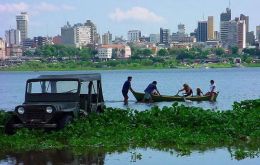
Floods have killed nine people and driven tens of thousands of people from their homes while swelling rivers to record levels in southern Brazil and neighboring Paraguay and Argentina, authorities said Tuesday.
-
Thursday, December 6th 2012 - 22:52 UTC
Terrible Thursday for Buenos Aires: toxic gas cloud scare and flash floods
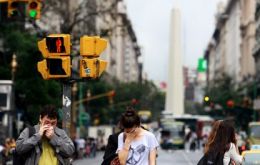
Terrible Thursday for the city of Buenos Aires: toxic gas scare in the morning with almost panic situations and flooding mid afternoon by the same rains that helped clear the cloud hovering over residents with sore throats and irritated eyes.
-
Thursday, November 29th 2012 - 13:02 UTC
Post-Sandy, why urgent preparation is needed for storms of the future

By Lord Julian Hunt and Professor Johnny Chan.(*) - The devastation wrought by super-storm Sandy (253 deaths in the Americas and over 50 billion dollars in economic damage and disruption), is prompting renewed thinking about climate change and national security.
